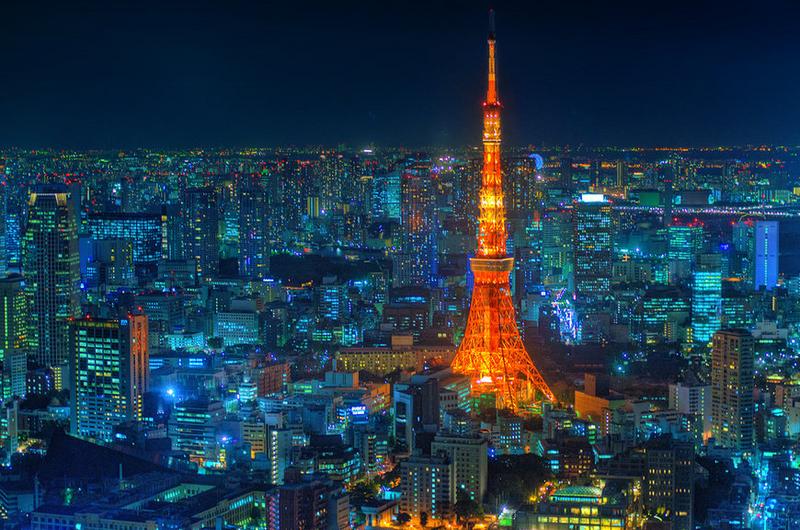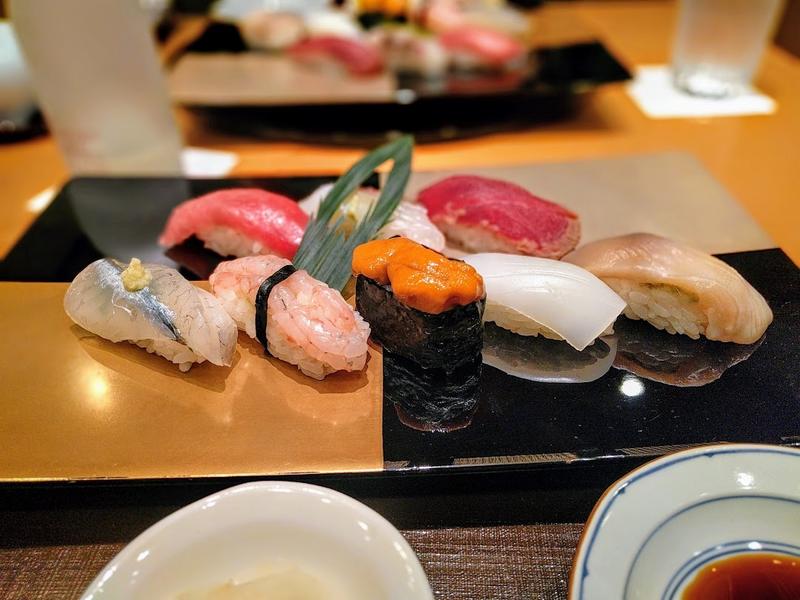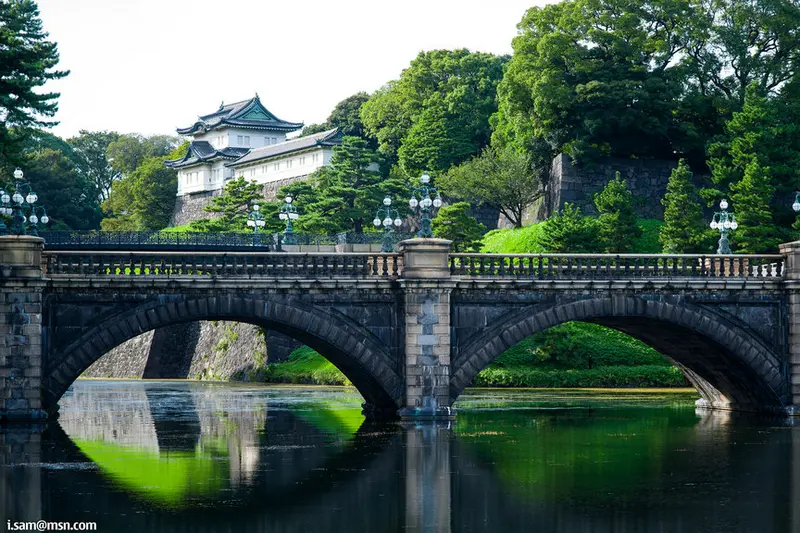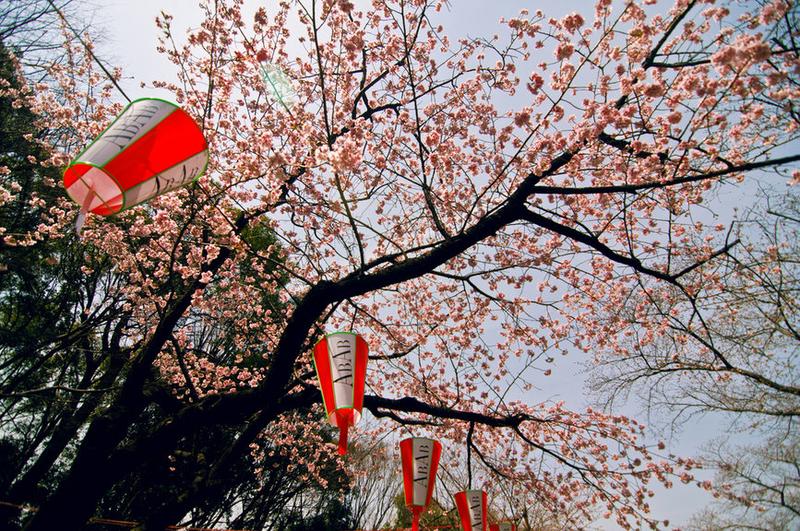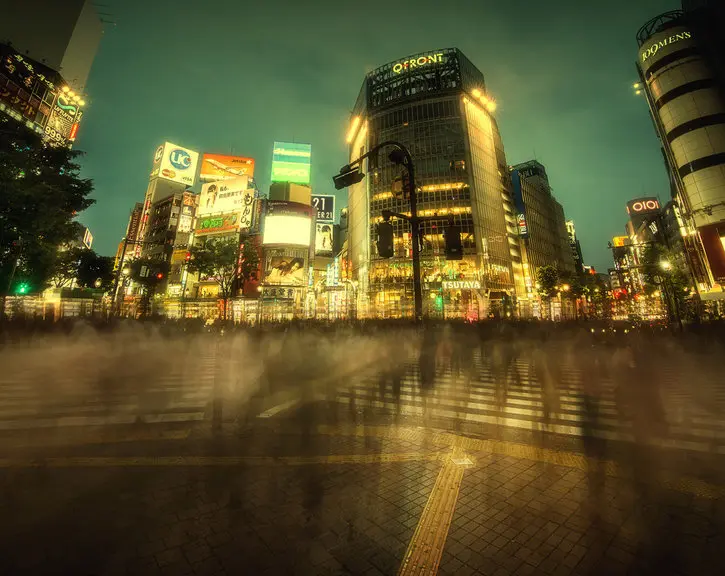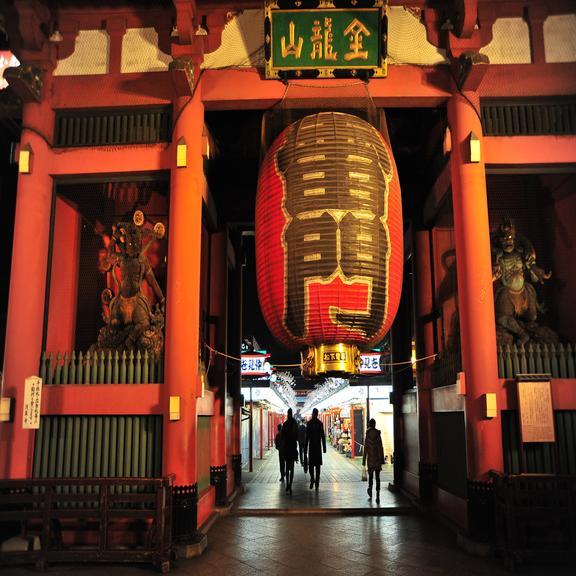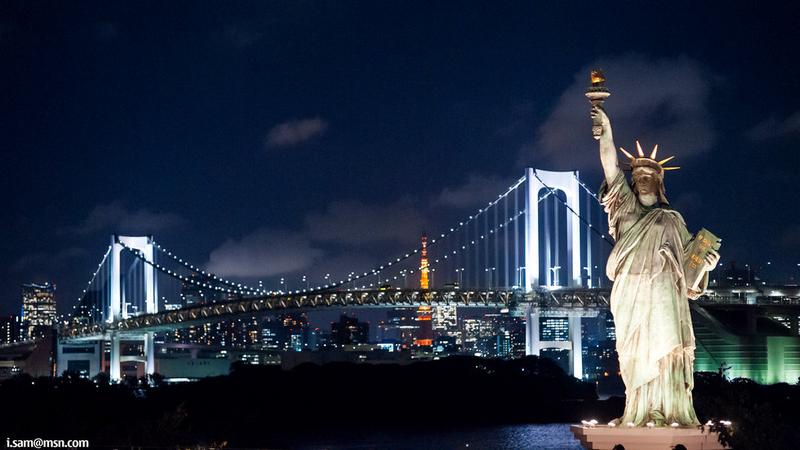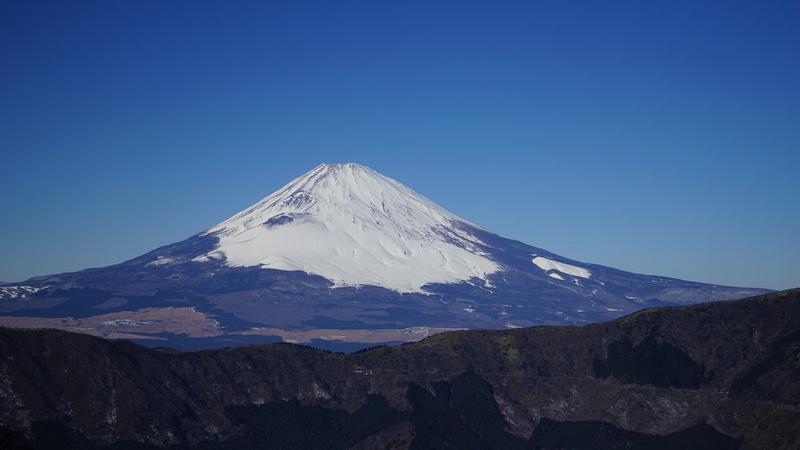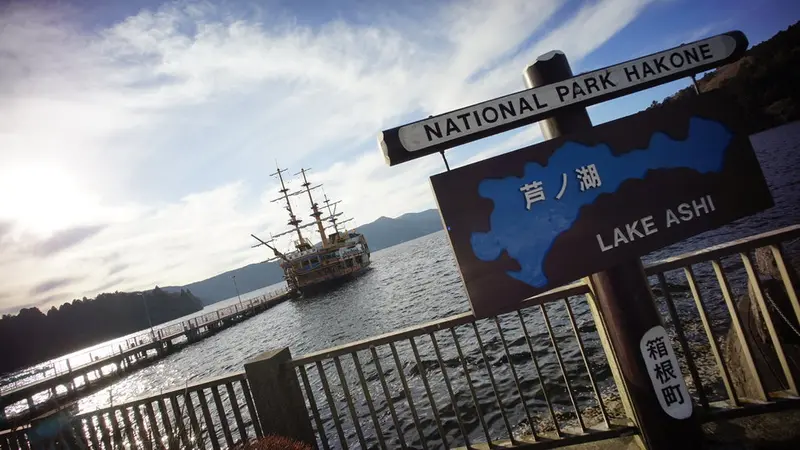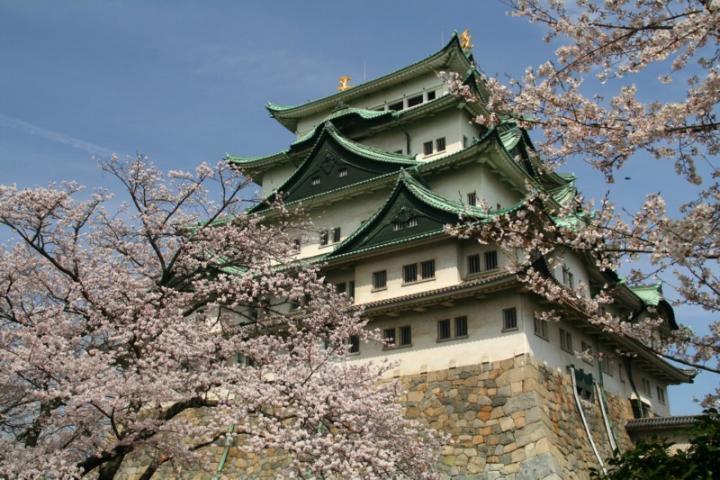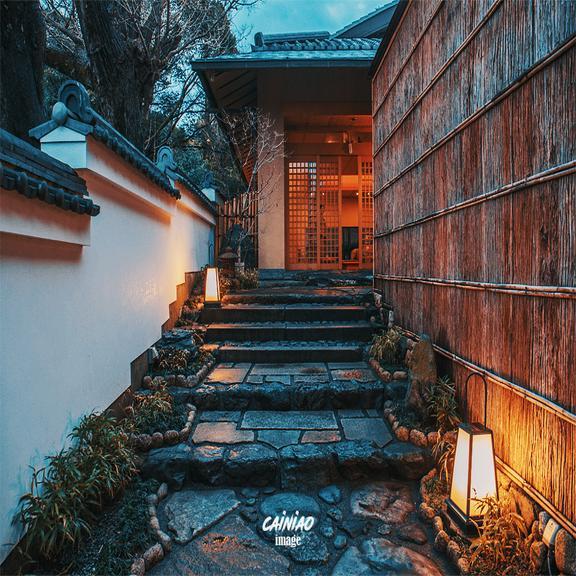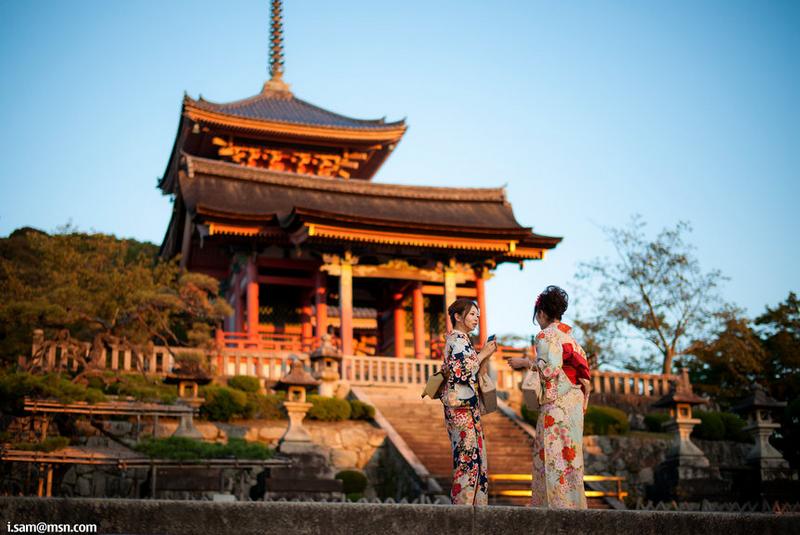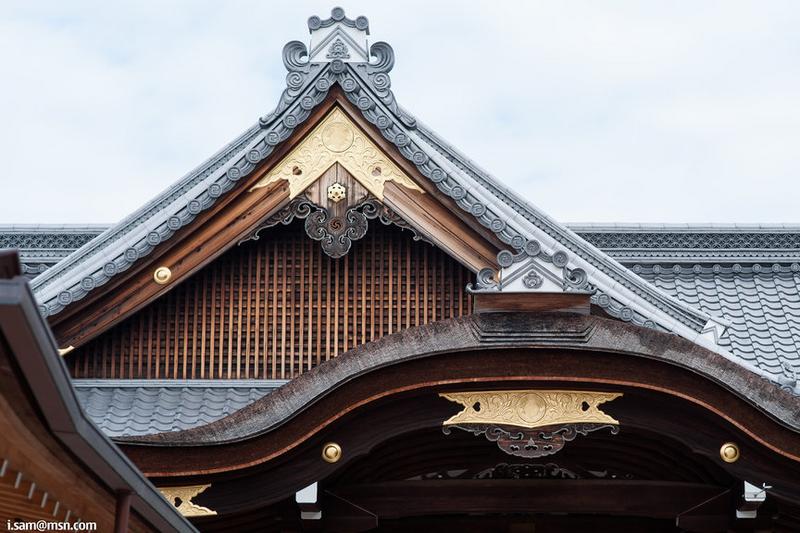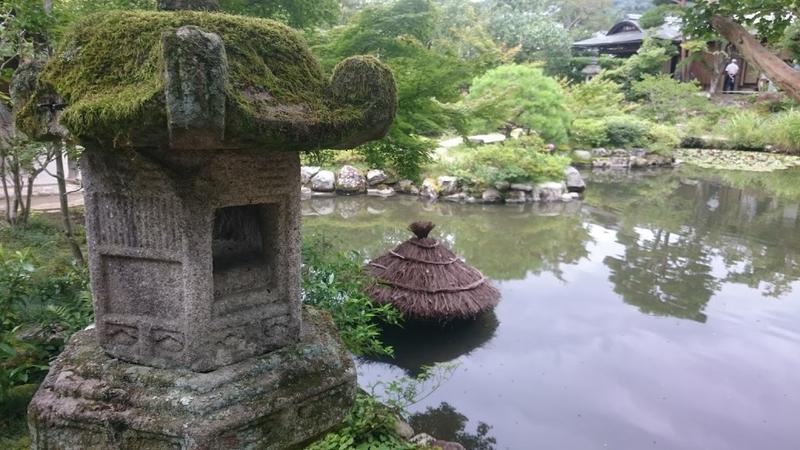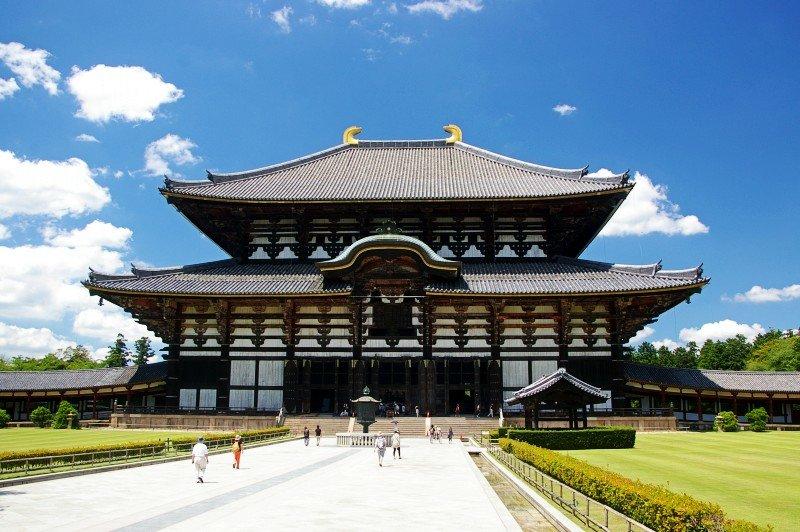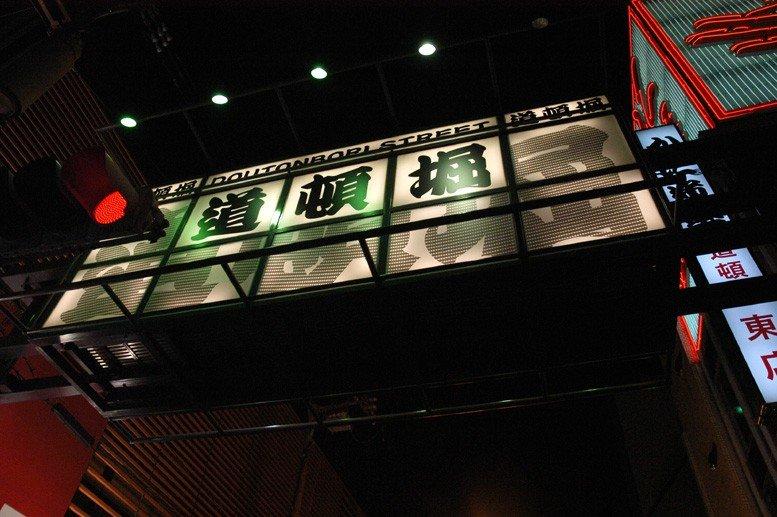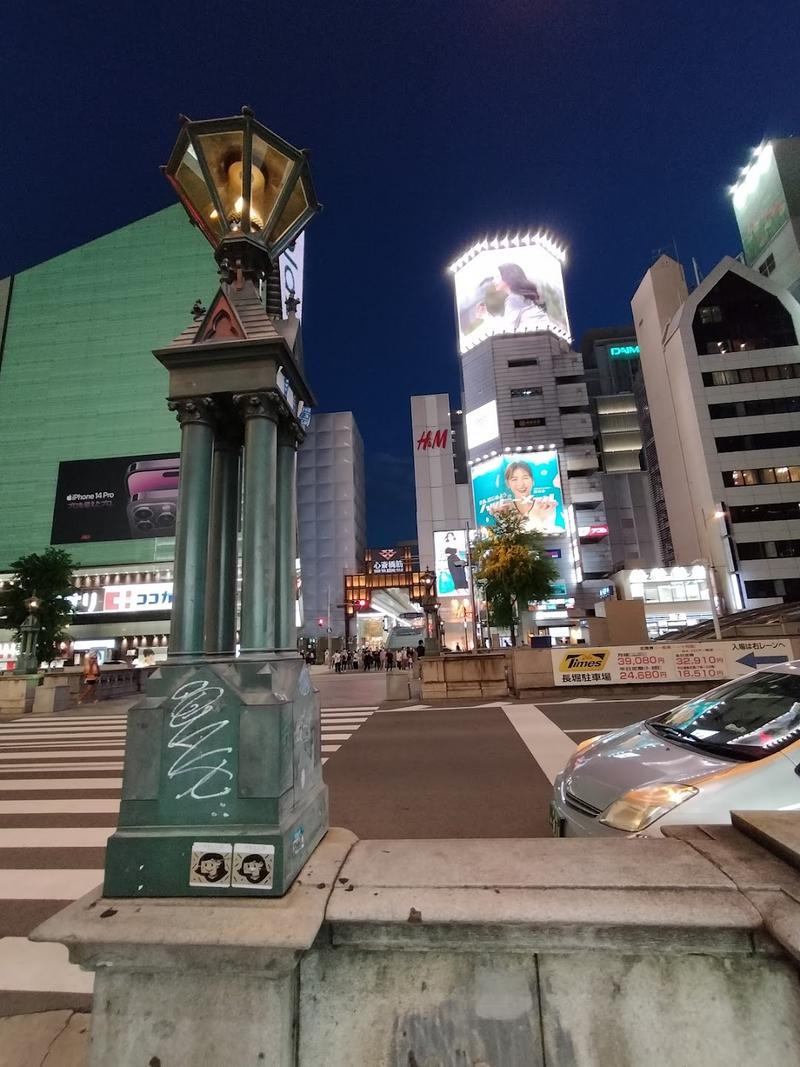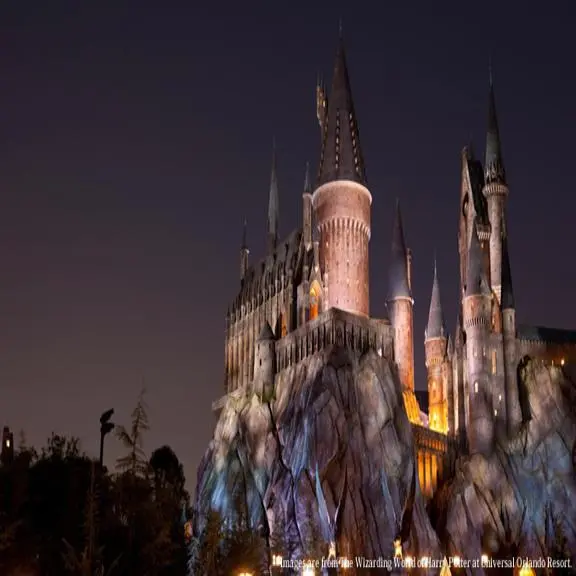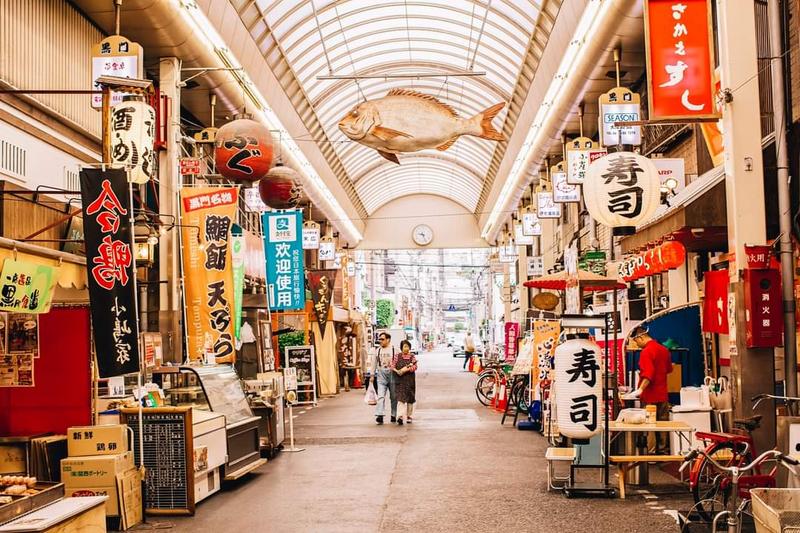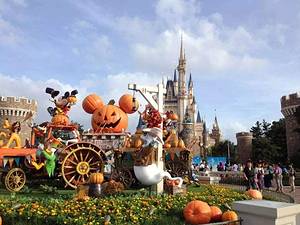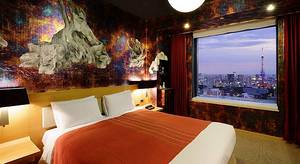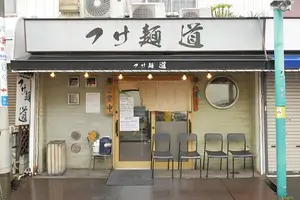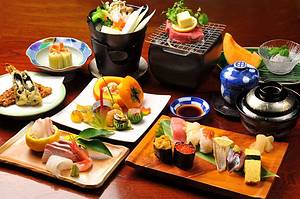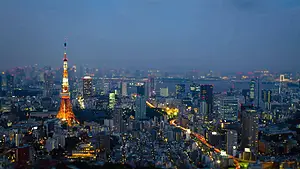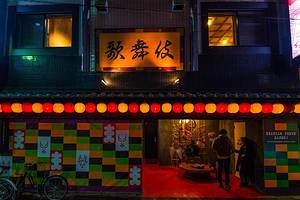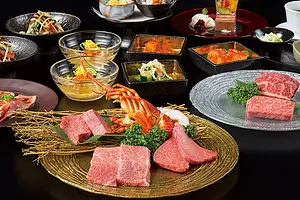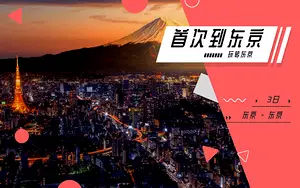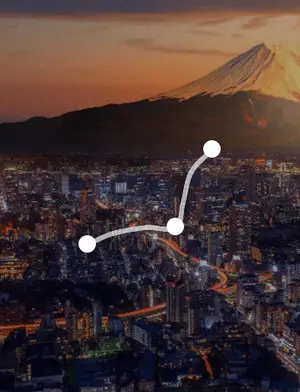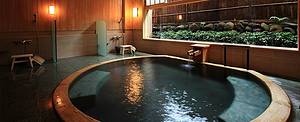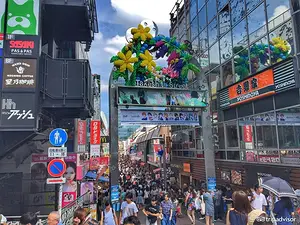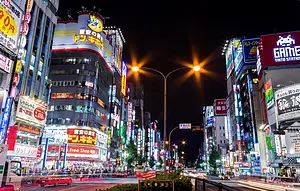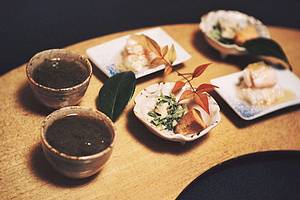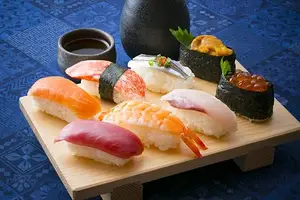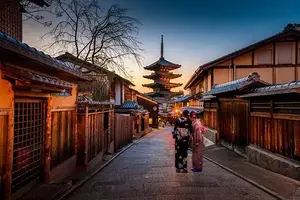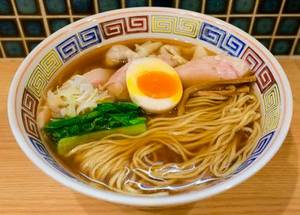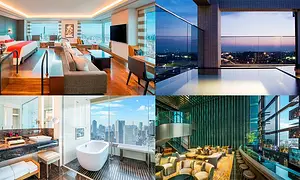10 Days Japan Free Tour - Explore Tokyo, Hakone, Kyoto, Osaka
6 cities |
26 attraction(s) |
total distance 533
km
 TIPS
TIPS
Day1
Day2
Day3
Day4
Day5
Day6
Day7
Day8
Day9
Day10
Day1: Tokyo
3 attraction(s) ·
4 km
1
Tokyo Tower, also known as Nihon Denpa-tō, is located in Shiba Park, Minato Ward, Tokyo, Japan. It is a red and white tower modeled after the Eiffel Tower in Paris, standing at a height of 332.6 meters, 8.6 meters taller than the Eiffel Tower. Built in October 1958, it was once the tallest structure in Tokyo until the completion of Tokyo Skytree (634 meters) in February 2012, and has always been one of the landmarks of Tokyo. The tower has an observation deck at the top, offering panoramic views of the entire Tokyo metropolitan area, with a clear view of Mount Fuji on a clear day. The tower's lighting changes colors according to the season, with special decorations for holidays such as Christmas.
2
km
3
The Imperial Palace is a representative landmark in the center of Tokyo, consisting of the Imperial Palace Plaza, Niju Bridge, Imperial Palace Outer Garden, and Imperial Palace East Garden. During the Meiji Restoration, the Emperor moved from Kyoto to this location, giving it the name "Imperial Palace". Now, a portion of the area is open to the public as a park, with entrances at Hibiya Station to the south and Otemachi Station to the north.
Despite the surrounding skyscrapers, the Imperial Palace still retains the atmosphere of the Edo period, giving a strong sense of history. As a symbolic building of Tokyo, it has witnessed the changes of time and protected the descendants of Edo.
Around the Imperial Palace, taking a stroll along the moats, you can see the walls of the Edo Castle, as well as sculptures of the samurai Kumasu Narimasa, beautiful carved decorations on the entrance gate of Otemon, and the entrance to the Kitamru Park at the Tateyammon. In the East Garden, there is the Nino-Maru, where you can see the grand shogunate villa and exquisite gardens, which are precious legacies from the Edo period.
Day2: Tokyo
3 attraction(s) ·
11 km
1
Ueno Park is one of Tokyo's famous parks, covering a large area and hosting multiple facilities such as a zoo, art museum, and museums. It also has a rich natural landscape, including famous landmarks such as Shinobazu Pond and Takegata Fountain. The park's most famous symbol is the bronze statue of Takamori Saigo. In spring, Ueno Park is a popular spot for cherry blossom viewing in Tokyo, where visitors can admire the beautiful cherry blossoms in full bloom.
7
km
2
Started as a kimono store in 1886, this famous destination is now known for high fashion shopping.
4
km
3
Shibuya is one of Tokyo's most unique and bustling districts, targeting primarily young people as a commercial center. The famous Shibuya 109 building represents this district, not only as a shopping center, but also as a symbol of GAL fashion. Shibuya gathers many department stores and fashion shops, as well as various types of small shops. In addition, there are many restaurants, bars, clubs, and live music venues in Shibuya, showcasing popular culture. If you walk from Shibuya's central street to the PARCO department store, you will pass a slope called Spain Hill, where there are a variety of clothing and grocery stores, dining and amusement centers, and unique Spanish-style decorations that are popular with young people.
The intersection in front of Shibuya Station is famous and is one of the busiest intersections in the world. When the green light comes on, the rushing flow of people floods the road from all sides, and the huge advertisements and screens of many commercial areas around add another charm to this busy city. Each street in this area has a different style and feature, with countless places to eat, drink, and play. If you come to Shibuya, don't forget to visit the famous bronze statue of Hachiko, the loyal dog, outside JR Shibuya Station!
Day3: Tokyo
2 attraction(s) ·
11 km
1
Sensoji Temple is the oldest temple in Tokyo, built in 628. According to legend, a fisherman discovered a golden statue of the goddess Kannon and built a tower to enshrine it in the same spot. Later, it was expanded into its current size. During the Edo period, Tokugawa Ieyasu ordered the rebuilding of Sensoji Temple, which gradually became a cultural center.
Climbing the gate with a giant lantern, the Kaminarimon gate, is one of the symbols of Asakusa and even Japan. In the middle of the gate are statues of the gods of thunder and wind, and its formal name is "Furaijin Gate."
Through the shopping street, you can see the main hall, which gradually became prosperous because Ieyasu designated it as a place of prayer for the shogunate. In the northeastern corner of Sensoji Temple, there is also Asakusa Shrine, which was built in the Heian period and has an elegant and beautiful architectural style.
Every May, Sensoji Temple holds the Sanja Festival, one of the three major festivals in Edo, which is the grandest event in Asakusa. This festival originated in the Edo period and fully displays the traditional culture and human emotions of the time. In the activity of carrying the shrine, several dozen people dress up in the style of the old-fashioned and gather from various directions to Sensoji Temple, creating a lively atmosphere.
11
km
2
Odaiba is a popular entertainment district located on artificial land in Tokyo Bay, especially loved by young people. Odaiba Seaside Park is the main tourist attraction in the area, with the only beach in Tokyo and a waterfront promenade with a view of the Rainbow Bridge. The beautiful scenery here has attracted many filming locations for Japanese dramas. In addition, Odaiba has a range of facilities, including Tokyo Big Sight, Fuji TV Building, Toyota Mega Web, Museum of Maritime Science, and National Museum of Emerging Science and Innovation. The giant Ferris wheel, dining establishments, and shopping centers are also important attractions for visitors. Odaiba is an ideal place to enjoy stunning views, both day and night. Especially at night, Odaiba is even more beautiful and attracts many travelers who love to capture night scenes. Moreover, Odaiba has several large shopping districts, such as VenusFort, Aqua City, Decks Seaside Shopping Center, and Odaiba 1-Chome Shopping Street, for visitors to explore shopping and entertainment.
Day4: Hakone
3 attraction(s) ·
12 km
2
Owakudani in Hakone is a famous tourist spot and hot spring resort near Tokyo. It is the site of volcanic activity with constantly gushing hot springs and white gas clouds, reminiscent of volcanic eruptions from around 3,000 years ago. From the observation points, visitors can enjoy a magnificent view of Mount Fuji. Viewing Owakudani from the cable car, one deeply feels the name "Hell Valley." Although the spring water in Owakudani is toxic, it is a popular tourist spot with rich activities, including the famous "Hot Spring Black Eggs." Boiled with high temperature sulfur spring water, the eggshells turn black due to the sulfur in the water, making the eggs even more delicious. In addition, visitors can see the eruptions of sulfur gas and, on clear days, enjoy an almost close-up view of the beautiful Mount Fuji. For "EVA" anime fans, Owakudani is where the protagonist Shinji finally stops, and the desolate mountain walls and white gas clouds match perfectly with scenes from the animation.
5
km
3
Ashinoko Lake is located in the western part of Hakone Town. It is a volcanic lake formed by volcanic activity over 3,000 years ago and is one of the largest lakes in Kanagawa Prefecture. Due to its proximity to Mount Fuji, it has become a famous tourist attraction. Despite the wet and rainy climate of Ashinoko Lake, visitors still have the opportunity to enjoy the beautiful scenery of Mount Fuji. The lake offers boat tours, with the unique pirate ship adding a touch of fun to the trip. Ashinoko Lake is also known for its fish population, including rainbow trout and black bass, attracting many fishing enthusiasts.
Day5: Nagoya
2 attraction(s) ·
1 km
2
Nagoya Castle, also known as Meijo, is one of Japan's important designated historic sites and is ranked fourth among Japan's Top 100 Castles. Built in the hometown of Oda Nobunaga, the great-grandfather of Tokugawa Ieyasu, Nagoya Castle was reconstructed by Tokugawa Ieyasu from the former Kiyosu Castle, with the assistance of other daimyo lords such as Kato Kiyomasa and Fukushima Masanari, completing the construction in less than two years. While Nagoya Castle has experienced damage from wars, it was restored in 1959 and still leaves a lasting impression.
Nagoya Castle is a complex of several castle structures. The central area is the Honmaru, where the main keep sits on the western side. On the southeast side of the main keep are the remnants of the Honmaru Palace, and the two corners of the Honmaru area feature the Southwest and Southeast Towers. Unlike other castles, Nagoya Castle's main keep has an elevator inside, allowing visitors to easily enjoy the historical artifacts, simulation models, scenes, and games inside the castle.
Additionally, on weekends and holidays, there are performances by a group of actors dressed as famous feudal lords of the Sengoku period in Nagoya Castle's Ninomaru Square. This includes notable figures like Oda Nobunaga, Toyotomi Hideyoshi, Tokugawa Ieyasu, Maeda Toshiie, Kato Kiyomasa, and Maeda Keiji. Visitors can not only enjoy exciting performances but also take photos with these historical figures, making it an opportunity not to be missed.
Day6: Kyoto
3 attraction(s) ·
11 km
2
Kinkaku-ji, also known as the Golden Pavilion, was originally built as a retirement villa for the shogun Ashikaga Yoshimitsu in 1397. It later became a Zen temple. The name "Golden Pavilion" comes from the gold leaf that covers its exterior. In 1950, the temple was unfortunately set on fire and the golden building was burned down, but it has since been rebuilt to its former glory. Kinkaku-ji is a three-story building with the first floor called Hojo, the second floor housing a shrine dedicated to Kannon, and the third floor as a square-shaped Buddhist hall with three statues of Buddha. The temple's golden reflection shimmering in the surrounding Mirror Pond is a beautiful sight and one of the iconic landmarks of Kyoto.
Unlike other attractions, visitors of Kinkaku-ji do not enter with a ticket, but instead receive a stamp with a blessing. Within the temple grounds, visitors can use Chinese and Korean fortune slips for divination and purchase the famous matcha ice cream.
6
km
3
Gion Corner is a theater that showcases traditional Kyoto performing arts. The performances usually last around an hour and include Kyoto-style dance, tea ceremony, flower arrangement, koto music, Noh theater, and Bunraku puppetry. Visitors can experience the rich cultural heritage of Kyoto through these performances. Additionally, the Kabuki Gallery displays stage videos and Kabuki-related items such as hairpins.
Day7: Kyoto
3 attraction(s) ·
7 km
1
Kiyomizu-dera is a historical temple located on Mount Otowa in the eastern part of Kyoto. It was first built in 778 and has been rebuilt several times, with the current structures mostly dating back to the period between 1631 and 1633. The temple's main hall, Niomon Gate, Western Gate, Three-story Pagoda, and Bell Tower have been designated as national treasures and important cultural properties. The most famous feature of the temple is the Kiyomizu stage, a platform that was built without using a single nail and is located on a cliff, offering a panoramic view of the city of Kyoto. The temple also features the Otowa Waterfall, where three separate streams represent longevity, academic success, and finding love. In addition to the main temple, there are other buildings located throughout the grounds, such as the Three-story Pagoda and Zuigu-do Hall. Visitors can purchase tickets to participate in the "Womb World Walk," a prayer experience that symbolizes being inside the womb of a Bodhisattva. The upcoming "Kanji of the Year" event will take place at Kiyomizu-dera, and the Kyoto Kanji Association considers it a typical representative of Japanese temples. Kiyomizu-dera is designated as a UNESCO World Heritage Site and is considered one of the iconic landmarks of Kyoto due to its lush scenery and long history.
4
km
2
Nijo Castle is located in the center of Kyoto. It was built by the first shogun of the Tokugawa shogunate, Tokugawa Ieyasu, and it was the place where the last shogun, Yoshinobu Tokugawa, returned political power to the emperor. Nijo Castle preserves the art and architecture of Japan's Momoyama Period and is recognized as a UNESCO World Cultural Heritage site. The Honmaru, or main palace, is an important cultural property, while the Ninomaru Palace is a national treasure, featuring rooms where the shogun received daimyo lords and lived. The castle's gardens are also famous for their traditional Japanese design. Nijo Castle also features a corridor called the "Nightingale Floor," which was designed as a security measure to detect intruders. While the Honmaru is normally not open to the public, visitors can explore the Honmaru Garden. Additionally, Nijo Castle is a popular spot for cherry blossom viewing and showcases vibrant autumn colors, making it a must-visit destination for travelers in Kyoto. The castle grounds also offer pedestrian streets and shops for visitors to enjoy local specialties and take breaks during their sightseeing.
3
km
Day8: Nara
2 attraction(s) ·
4 km
2
Todai-ji Temple is a famous temple of the Hua-yen Sect in Japan, also known as Da Hua-yen Temple, the Four Heavenly Kings Hall of the Golden Light Guard Temple, and so on. It is located in the eastern part of Heijo-kyo (now Nara), and is one of the seven great temples of the southern capital, with a long history of about 1200 years. In 1998, Todai-ji Temple was listed as a World Cultural Heritage Site as a part of the historical relics of ancient Nara. The Great Buddha Hall of Todai-ji is one of the largest wooden buildings in the world, with a frontage of 57 meters and a depth of 50 meters. Within the Great Buddha Hall stands the 15-meter-high Rushana Buddha. In addition, there are other famous buildings in the Todai-ji Temple complex such as the South Gate, the February Hall, the March Hall, and the Shoso-in Repository, all having extremely high historical, cultural, and artistic value.
Day9: Osaka
3 attraction(s) ·
4 km
1
Osaka Castle Park is a large green space park in Chuo Ward, Osaka City. The park has multiple public facilities including Osaka Castle International Cultural Sports Hall, Sun Plaza, Softball Field, Open-air Music Hall, and Rugby/Football Field. In the center of the park stands Osaka Castle Tower, where visitors can go to the observation deck for a fee and visit the historical museum. From the top floor, you can overlook the beautiful scenery from Mt. Ikoma to Osaka Bay. Every Sunday during the day, there are amateur bands playing street music in the park. Various trees are planted in the park, and the cherry blossom and plum blossom seasons are good times to enjoy the flowers. The observation deck offers a view of wild birds feeding on the riverbank, making it a suitable place for family outings.
3
km
2
どうとんぼり
Dotonbori is Osaka's most bustling district and also the local food center. It is the birthplace of Osaka's food culture and attracts many travelers who come to taste the cuisine. From takoyaki, teppanyaki, yakiniku, kushikatsu, revolving sushi to fugu cuisine, it covers almost all of Osaka's characteristic cuisine, even inconspicuous small shops can serve delicious food. This longing food culture fully demonstrates the appetite of the people of Osaka, and it's not uncommon to eat until bankrupt.
If you want to recommend a few stores, it is recommended to try the “Kinryu Ramen” with always-long queues in front of the store, the teppanyaki original “Botechu” and the famous store “Konamon Museum”, where you can experience the experience of tasting and making takoyaki. In addition, “Osaka Ohsho” and “Kani Douraku” are also worth trying. The most authentic taste of these two nationally known chains is in their main stores.
In addition to food, you can also visit Hozenji Temple, go to the Matsuzakaza to enjoy Kabuki performances, take a walk along Dotonbori River at night, enjoy the colorful neon lights, and experience the feel of the Edo period.
1
km
3
Urban arcade with a wide variety of stores amid bright advertising signage & pedestrian crowds.
Day10: Osaka
2 attraction(s) ·
7 km
1
USJ, or Universal Studios Japan, is a super popular theme park among travelers in Japan, just like Tokyo Disneyland. If you are traveling to the Kansai region, you shouldn't miss this place. Besides enjoying the beautiful scenery of Osaka, coming to Universal Studios to experience a unique thrill and joy is also a great choice. Here, you can participate in various exciting entertainment facilities themed around Hollywood movies, such as watching Spider-Man swinging around, avoiding the jaws of a giant shark, witnessing roaming dinosaurs, and experiencing the danger of being chased by zombies in Resident Evil. The park also offers various interesting themed restaurants and mesmerizing nighttime parade performances.
The Harry Potter-themed area, which opened in July 2014, is loved by visitors. It not only highly recreates the scenes from the original works but also sells a large number of exquisite merchandise. The park is conveniently located and close to Osaka Station, and the waiting time for rides is much shorter compared to Disneyland. The opening and closing times vary daily, so travelers who want to see the nighttime parade should check the official website in advance and plan accordingly. UnionPay cards starting with 62 can be conveniently used for payment and cash withdrawal here, and most ATMs also provide Chinese interfaces, making it more convenient for visitors to enjoy the park.
7
km
2
Spacious market with vendors selling street food, fresh produce & shellfish, plus souvenirs.
